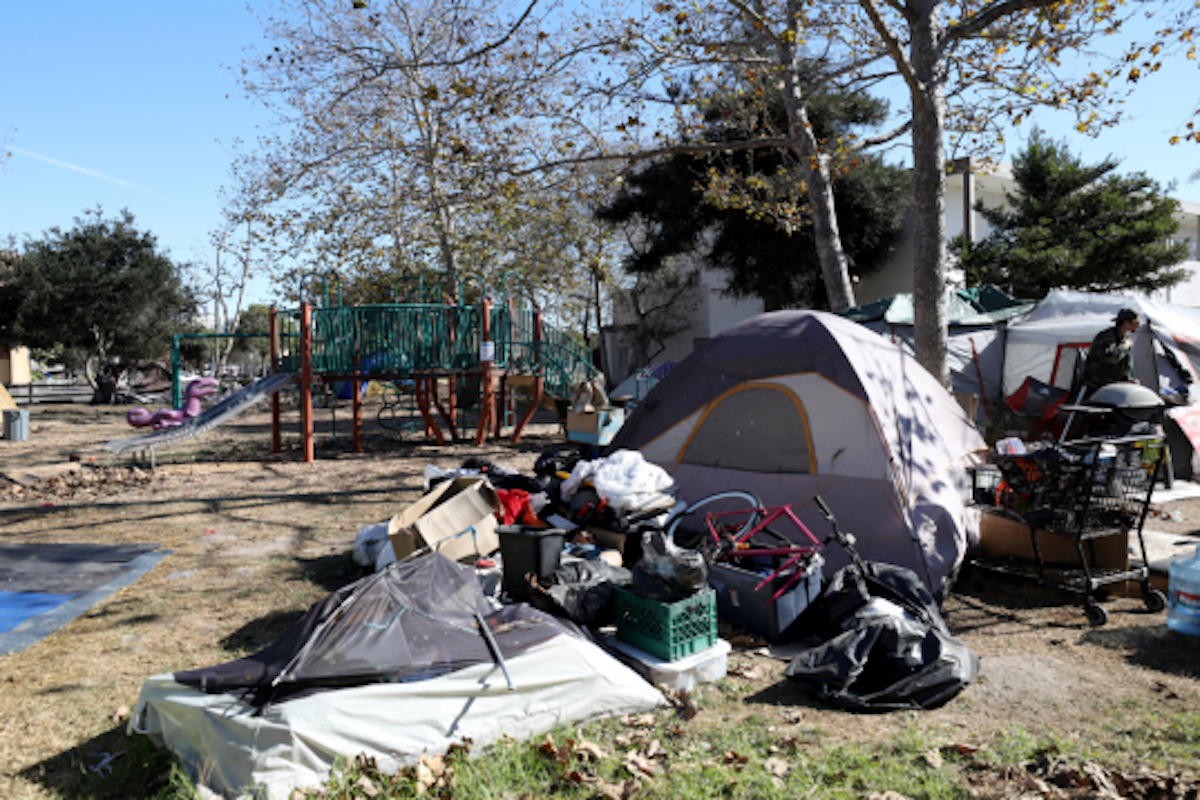Santa Barbara Homelessness Report: One Step Forward, Two Steps Back
County Reports Progress on Encampment Resolution Strategy and Community Action Plan, but Sees Startling Spike in Unhoused Children

The housing issue is so great that even Santa Barbara County staff were calling the housing hotline asking for help when the pandemic’s eviction moratorium ended in March 2022. That is what Dinah Lockhart, the county’s retiring deputy director of housing and community development, told the county supervisors on Tuesday, as part of the county housing division’s report on ending homelessness.
The two-pronged plans are government programs that have actually worked, to some extent: The homeless Encampment Resolution Strategy decreased the number of camps along the highways and in towns, and Community Action Plan placed the regulars on State Street panhandling or offering friendly “I like your smile” comments in housing.
The encampments program outlines the difficulties in a nutshell: 961 individual camps were identified across the county, 380 of them were assessed, and 154 of them are considered “resolved,” meaning the people living in them either accepted shelter (15 percent temporary; 4 percent permanent) or moved on to another camp. Without existing housing for the campers to move to, the program could do little more than clean up the camps, work on referrals, and build trust, though calls for police and fire services decreased 13 percent over the two-year program period. To continue the effort, the county is applying for a $6 million grant from the state’s Encampment Resolution Fund, with an emphasis on camps near waterways and highways.
But for every success, two more people went without housing. The report notes 439 new units and long-term rental subsidies were secured in 2022, 140 beds in temporary housing achieved, and 436 people rapidly rehoused — all with services to support and keep people in their new homes. They represent roughly one-third of the need, however, and the homeless included 87 percent more children who needed services in 2022 compared to 2019.
Kimberlee Albers, who manages homeless assistance for the county, said that families with children represented about 20-22 percent of the homeless population, adding that they’d seen an increase recently in families with preschool-age children who were homeless. One of the four tiny-home villages proposed by nonprofit DignityMoves might include family units, Albers said, and a couple of permanent housing projects had two- and three-bedroom units for families.
DignityMoves has housed 35 formerly homeless people in Santa Barbara and has plans to put up 300 more of its tiny homes at four county-owned sites in Santa Maria, Noleta, and Lompoc. They are interim structures that are necessary to reduce migrations to and from encampments and steer homeless people toward indoor shelter. Also being finished in 2023 are the Buena Tierra project in Goleta, formerly the Super 8 motel, and Vera Cruz Village on Cota Street; together they will add 87 permanent homes, and another 234 are in the pipeline.
Supervisor Bob Nelson jokingly referred to the Santa Maria site as being across the street from Supervisor Steve Lavagnino’s desk at the Betteravia Government Center. “We’re going to put it in our front yard, if this gets through the public process,” Nelson said, “so we can keep our eyes on it and get immediate feedback.” Lavagnino emphasized the housing would be temporary and was “a Santa Maria solution for a Santa Maria problem,” not new homes for refugees from Santa Barbara’s high rental prices. (A community meeting takes place at 6 p.m. in the county supervisor room on Wednesday to discuss the new housing proposal.)
More than a dozen funding sources contributed to the housing and the services, including California’s Homekey program, the American Recue Plan Act, and the state’s Emergency Solutions Grant for coronavirus, totaling $88.9 million since February 2021. Albers said the federal House America project spurred goals for more housing, as well as better data collection. The greater amount of information collected in efforts like the Point-in-Time count, which her department is gearing up for now, revealed the startling increase in unhoused children — from 399 to 746 between 2019 and 2022. Albers said this was largely because the state Department of Social Services had begun using the homeless management system the county also used. “We had 379 more children because of a more complete data picture,” she said, “but it allows us to make better-informed decisions regarding minors experiencing homelessness.”
As part of the 18-month progress report, Albers told the story of a wheelchair-bound man who’d lived on the streets since 2010, “looking for his next high and a safe place to sleep,” she recounted. Since August, when he received a housing voucher under the emergency program, he’d lived in senior housing with a myriad of supportive services, including in-home weekly therapy. “A few months ago, he made the choice to start medically assisted treatment,” she said. The man reunited with some of his family, and his health improved to the point “that the wheelchair that bound him for so long is no longer a part of his life.”
Support the Santa Barbara Independent through a long-term or a single contribution.



